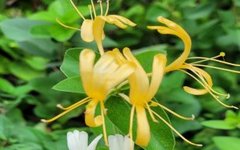What is Honeysuckle?
The honeysuckle in Traditional Chinese Medicine (TCM) refers to the dried flower buds or early flowers of the plant Lonicera japonica, harvested and dried before blooming in early summer. Honeysuckle has a long history of medicinal use, documented for over a thousand years in texts such as the “New Compilation of Materia Medica” and “Compendium of Materia Medica.”
Honeysuckle is also a traditional landscaping plant, known for its strong adaptability and ease of cultivation. Its stems can root when they touch the ground, grow rapidly, and produce uniquely colored flowers with both beauty and fragrance. It is commonly used for vertical greening materials such as trellises, walls, balconies, fences, and porches, creating beautiful scenery in summer with its abundant flowers and pleasant aroma.
Why is it called Honeysuckle?
The name “Honeysuckle” comes from the “Compendium of Materia Medica,” where it blooms in the third and fourth lunar months each year. In ancient times, yellow represented gold and white represented silver. When honeysuckle flowers bloom, the corolla is initially white and turns yellow after two to three days. New flowers are pure white like silver, while old flowers are light yellow like gold, creating a beautiful contrast of yellow and white, hence the name Honeysuckle. It is also known as Erbao flower or Lonicera flower. Due to the two colors of the flowers and their paired growth, it is also called Shuanghua (double flower).
What causes the color change in Honeysuckle? It is to attract insects for pollination. The color change helps pollinators easily distinguish the “age” of the flowers, identifying which ones have pollen, thus improving the accuracy and efficiency of pollination. The white (silver flower) signals “Come here! There is plenty of delicious pollen and nectar!” while the yellow (gold flower) indicates “This flower is no longer viable; look for another one.” This interaction benefits both animals and plants, as animals do not have to rely on chance to find nectar, while plants increase their chances of effective pollen distribution.
What are the benefits of Honeysuckle?
In the Ming Dynasty, poet Zhang Bi wrote in his poem “Yellow and White Flowers”: “When the yellow and white flowers bloom, they are most effective in healing various sores.” Honeysuckle has the properties of clearing heat and detoxifying, dispersing wind-heat, and is an important herb for reducing swelling and treating sores.
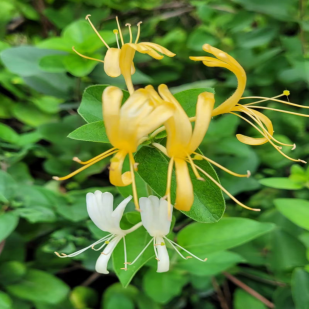
Clinically, it is used to treat various febrile diseases such as wind-heat colds, dysentery, febrile rashes, sore throat, and heat toxin sores. Modern research has found that chlorogenic acid compounds in honeysuckle have antibacterial, antiviral, and anti-inflammatory effects. The well-known Lianhua Qingwen granules contain it, as do the commonly used Shuanghuanglian oral liquid and pediatric throat granules for fever and sore throat. Honeysuckle water is effective for skin redness and swelling caused by hot weather, as well as for treating boils or prickly heat. In summer, if children develop prickly heat, it is advisable to try bathing in honeysuckle-infused water.
Honeysuckle has a delicate fragrance and is also a food-medicine dual-use variety. In the hot summer, people often brew honeysuckle tea, and honeysuckle dew is a popular “star” product in summer, loved by children. It helps clear heat and relieve summer heat, preventing and treating summer heat, flu, and children’s heat sores and prickly heat. For homemade drinks, it is recommended to take 20 grams of honeysuckle, pour in 1000 milliliters of boiling water, let it cool to warm, and add an appropriate amount of honey to mix well. Children should enjoy honeysuckle dew but not overindulge; although it is a “dew,” it is not a beverage and should not be consumed excessively.
Precautions for using Honeysuckle
Honeysuckle is cold in nature and should not be taken in large amounts or for long periods. It is especially unsuitable for individuals with spleen and stomach deficiency and cold, such as those who often experience diarrhea, abdominal pain, or coldness in the abdomen and extremities. Such individuals are advised to avoid it to prevent exacerbating their cold constitution and affecting their health.
What is the relationship between Lonicera and Honeysuckle?
Lonicera and Honeysuckle are “from the same mother”; they are the flowers and stems of the same plant, Lonicera japonica. In autumn and winter, the stems of Lonicera are harvested, dried, and used as the TCM herb Lonicera vine.
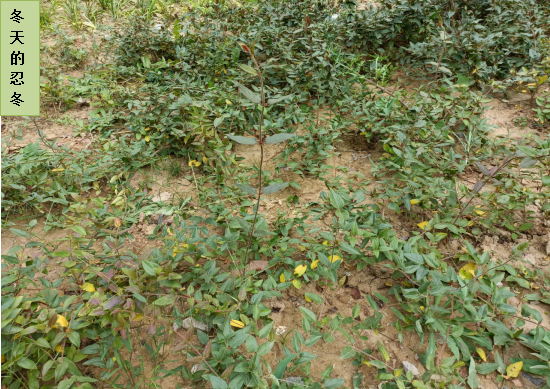
The Lonicera plant has a strong cold resistance. In winter, old leaves wither, and new leaves sprout, remaining green even at temperatures below -10°C. It thrives through the seasons, unaffected by howling winds or heavy snow. Historical herbal texts record its ability to “not wither in winter,” hence its flowers are used as Lonicera flower (Honeysuckle), and its vines are used as Lonicera vine.
Clinically, both have similar effects. However, Honeysuckle has a stronger heat-clearing and detoxifying effect, focusing on dispersing wind and reducing swelling, while Lonicera vine’s heat-clearing and detoxifying effects are not as strong as Honeysuckle, focusing more on promoting circulation and relieving pain.
What is the relationship between Lonicera vine and other names like Jin Yin Teng, Yuan Yang Teng, Egretta vine, and Zuo Chan Teng?
Jin Yin Teng, Yuan Yang Teng, Egretta vine, and Zuo Chan Teng are all aliases for Lonicera vine.
When Honeysuckle blooms, it produces two flowers on one stem, one flower is gold, and the other is silver, with the two flower stamens accompanying each other.
They extend outward, paired together, resembling a pair of mandarin ducks dancing gracefully, hence the names Jin Yin Teng (gold-silver vine) and Yuan Yang Teng (mandarin duck vine). The long, twisting vines resemble beautiful egretta birds, hence the name Egretta vine. The vines of Lonicera grow only in a leftward spiral, hence the name Zuo Chan Teng (left spiral vine).
Is Shan Yin Hua the same as Honeysuckle?
“Shan Yin Hua” is not the same as “Honeysuckle”; it is Honeysuckle’s “twin brother.” Shan Yin Hua also belongs to the Caprifoliaceae family and is harvested in early summer before blooming, dried, and used as medicine.
These “twin brothers” have slight differences in appearance; Honeysuckle has dense short hairs on its surface, while Shan Yin Hua is smoother and hairless. Honeysuckle is rod-shaped, thicker at one end and thinner at the other, resembling a small mallet; while Shan Yin Hua is mostly elongated and slightly curved, with little difference in thickness.
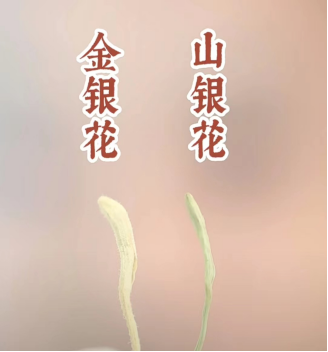
Clinically, Shan Yin Hua and Honeysuckle are similar, both clearing heat and detoxifying, and in some regions, Shan Yin Hua is used as a substitute for Honeysuckle.
Is Jin Yin Mu the same plant as Honeysuckle?
They are two sister plants from the same family.
Jin Yin Mu, also known as Jin Yin Lonicera, is a woody plant that often grows independently as a small tree, while Honeysuckle is a vine that climbs on other objects.
The fruit of Jin Yin Mu is red, while the fruit of Honeysuckle is blue-black. It is important to note that the fruit of Jin Yin Mu is very attractive but toxic and should not be consumed by humans; it is a delicacy for birds.
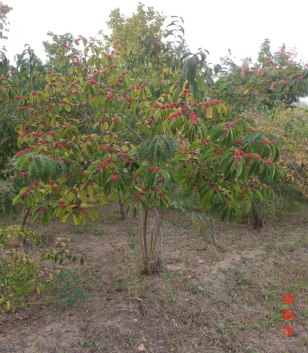
In winter, Honeysuckle’s leaves do not wither, while Jin Yin Mu’s leaves do fall, and its bright red fruits do not drop.
Jin Yin Mu has similar heat-clearing and detoxifying effects as Honeysuckle, and the whole plant can be used medicinally, but it is mainly used for landscaping purposes. Jin Yin Mu is appreciated for its flowers in spring and summer and its fruits in autumn and winter, making it suitable for all seasons.
Knowledge Link: Color-Changing Flowers
There are other flowers in the plant kingdom that change color.
The hibiscus flower is white in the morning, pink at noon, and turns bright red in the evening. This is due to the concentration changes of anthocyanins and organic acids in the flowers with daily temperature variations, resulting in the phenomenon of “three color changes in one day.”
The flowers of the climbing plant also start white and later turn bright red, which helps attract moths that come out at night to feed on nectar while assisting in pollination.
The color changes of hibiscus and climbing plant flowers are adaptations to their survival environment, demonstrating the intelligence of plants in the competition for existence.
This article does not constitute medical advice; please follow medical guidance if needed.
This article has been edited and published in the excellent Chinese popular science journal “Why 100,000 Questions – Health Edition” in the 6th issue of 2024 (Issue No. 873).
Provided by: Wang Liying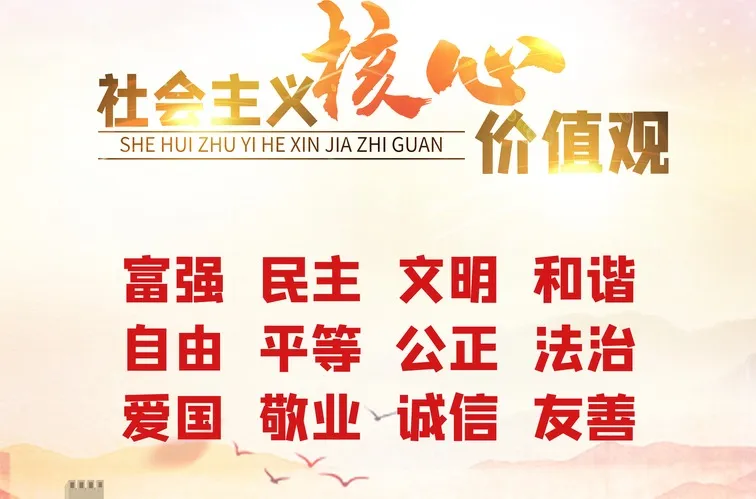

East Campus Address
1165 Tianqu East Road, Dezhou City, accessible by bus routes 18 and 108
West Campus Address
461 Dongfanghong West Road, Dezhou City, accessible by bus routes 5, 6, 17, 28, and 107
Contact Number
One-stop Service Center: 0534-7905088Administrative Duty: 0534-7905066Medical Dispute Complaints: 0534-7905288

Long press the QR code
Follow
Dezhou City Traditional Chinese Medicine Hospital
Public Account

Long press the QR code
Follow
Dezhou City Traditional Chinese Medicine Hospital
Smart Healthcare

Long press the QR code
Follow
Dezhou City Traditional Chinese Medicine Hospital
Video Account

Save the QR code
Recognize and follow on Douyin
Dezhou City Traditional Chinese Medicine Hospital
Official Douyin

